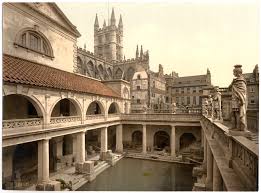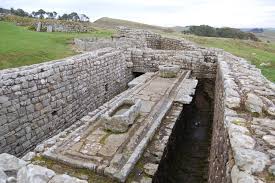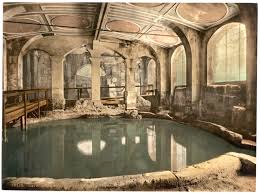Ancient Roman Public Latrines and Rubbish Disposal:
Roman Public Latrines
The poor usually used pots that they were supposed to empty into the sewer, or visited public latrines. Roman Public latrines date back to the 2nd century BC.

It is not sure whether intentionally or not but these places subsequently became spots for people to socialize. Long bench-like seats with keyhole-shaped openings cut in rows offered little privacy. Some latrines were free, for others small charges were made.
Recycling of Wastewater
The Romans recycled public bath wastewater by using it as part of the flow that flushed the latrines. Terracotta piping was used in the plumbing that carried wastewater from homes. The Romans were the first to seal pipes in concrete to resist the high water pressures developed in siphons and elsewhere.

Roman Public Latrines and Rubbish Disposal Facts
Beginning around the 5th century BC, city officials called aediles supervised the sanitary systems. They were responsible for the efficiency of the drainage and sewage systems, the cleansing and paving of the streets, prevention of foul smells, and general oversight of brothels, taverns, baths, and other water supplies.
The aqueducts provided the large volumes of water which after serving drinking, bathing, and other needs were flushed through the sewers. A system of eleven aqueducts supplied the city with water from as far away as the river Anio. Anio Novus and Aqua Claudia were two of the biggest systems. The distribution system was carefully designed so that all wastewater drained into the Cloaca Maxima.

The system in Rome was copied in all provincial towns and cities of the Roman Empire, and even down to villas which could afford the plumbing. Roman citizens came to expect high standards of hygiene, and the army was also well provided with latrines and bathhouses, or thermal.
Use of Water In Rome
Aqueducts were used everywhere in the empire to supply not just drinking water for private houses, but for supplying other needs such as irrigation, public fountains and thermal. Indeed, many of the provincial aqueducts survive till date in working order although they have been modernized and updated. Of the eleven ancient aqueducts serving Rome, eight of them entered Rome close to each other on the Esquiline Hill.

Also, the first aqueduct was the Aqua Appia built in 312 BC by the censor Appius. Other such important was the Aqua Marcia built between 144-140 BC that provided large amounts of quality water to Rome. One Aqueduct with some major importance to Rome was Traiana it tapped from the clear springs of the northern and western slopes above Lake Bracciano.
Roman Rubbish
Roman rubbish was often left to collect in alleys between buildings in the poorer districts of the city. It sometimes became so thick that stepping stones were needed. As a consequence, the street level in the city rose, as new buildings were constructed on top of rubble and rubbish.
Sewage System
Especially, in the larger Roman towns, people often got sick or died from drinking water that had been contaminated with sewage. Sewage was a human waste due to which people got sick with dysentery and occasionally also died. To fix this problem, many Roman towns built aqueducts to bring in fresh water from the hills outside of the towns.

They also built Roman public latrines and systems of sewage pipes to carry sewage out of the streets and dump it into the river. This was a big improvement on Greek sewage arrangements, where people just poured their waste into the street however they wanted.
Having said so, it should also be noted that the ancient Roman sewers have been somewhat overpraised. Despite their longevity, they ignored basic sanitary principles. They carried sewage, urban runoff, and drainage water together. This multiple employment made it necessary to have large openings along the streets.

These openings exposed Rome’s populace to the effluvia of the sewers. To mitigate this danger to public health, Romans had only two protections: (1) the masses of water from infiltration and the aqueducts which constantly flushed the drains, and (2) the hilly nature of the city which gave the drains a steep slope.
Roman Sewers facts
Although the ancient sewers were very skillfully constructed, they were not used to their full potential. There were few private connections to the sewers. Even with the wastewater system’s shortcoming, it is astonishing to note the absence of significant improvements in collection systems until the 1840’s, some 17 centuries later.



